Oceanside, CA Pollen and Allergy Report for Summer 2023
Pollen Allergy Trends in Oceanside, CA
When is pollen lowest in Oceanside, CA?

February
Lowest month total PPM
Avg. PPM
When is pollen highest in Oceanside, CA?

January
Highest month total PPM
Avg. PPM
How does pollen in Oceanside, CA compare to California?
Oceanside has a lower average PPM than the state of California.
Oceanside yearly avg PPM:
California yearly avg PPM:
How does pollen in Oceanside, CA compare to the USA?
Oceanside has a lower average PPM than the USA.
Oceanside yearly avg PPM:
USA yearly avg PPM:
Is pollen worse this year in Oceanside, CA?
Spring 2023 was worse than spring 2022.
Spring 2023 PPM:
Spring 2022 PPM:
Average PPM in Oceanside, CA
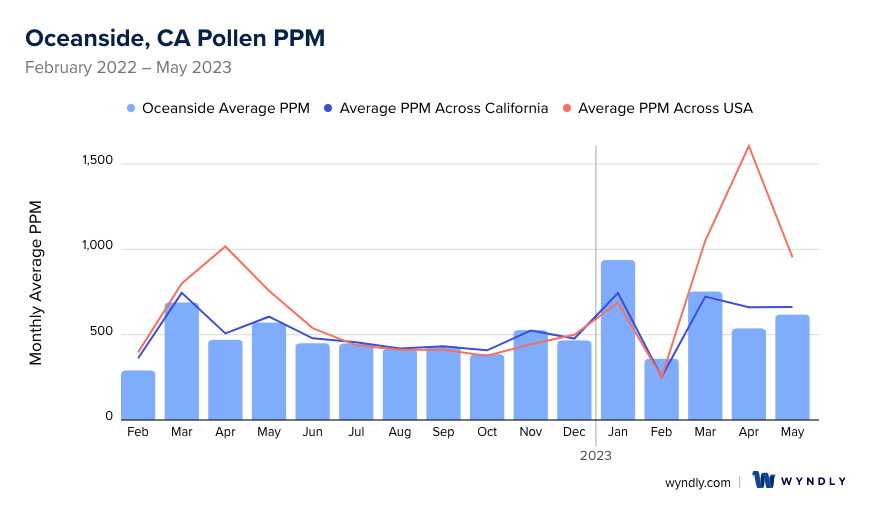
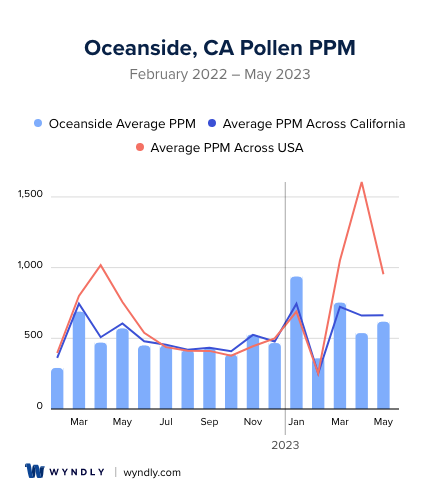
Oceanside, CA Pollen and Allergy Breakdown by Month
Grass
When is grass pollen highest in Oceanside, CA?
May has the highest grass pollen in Oceanside, CA with an average PPM of
When is grass pollen lowest in Oceanside, CA?
December has the lowest grass pollen in Oceanside, CA with an average PPM of
Tree
When is tree pollen highest in Oceanside, CA?
March has the highest tree pollen in Oceanside, CA with an average PPM of
When is tree pollen lowest in Oceanside, CA?
August has the lowest tree pollen in Oceanside, CA with an average PPM of
Weed
When is weed pollen highest in Oceanside, CA?
November has the highest weed pollen in Oceanside, CA with an average PPM of
When is weed pollen lowest in Oceanside, CA?
February has the lowest weed pollen in Oceanside, CA with an average PPM of
Oceanside, CA Pollen Monthly Breakdown by Pollen Type
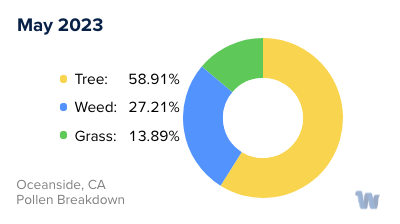
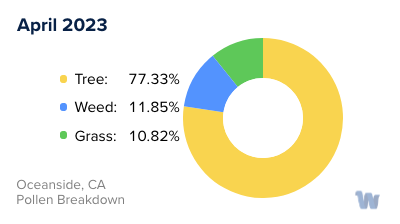
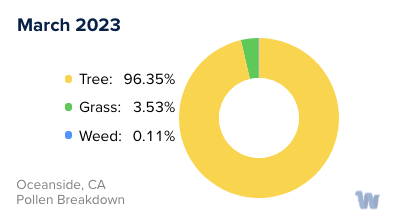
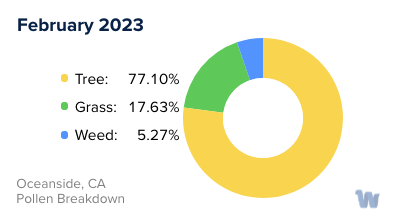
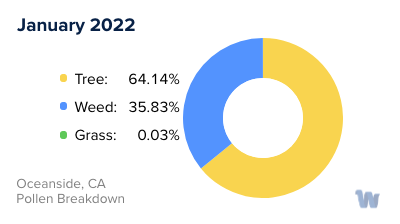
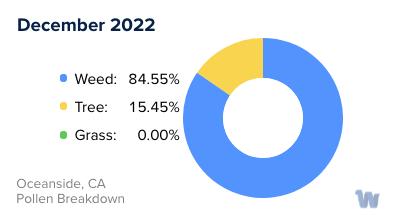
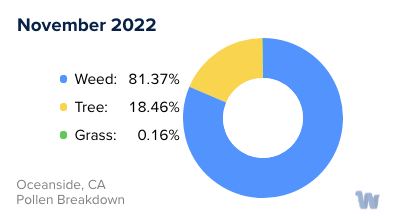
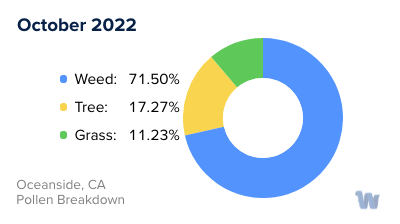

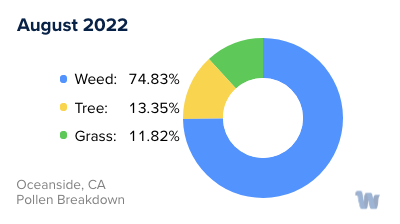
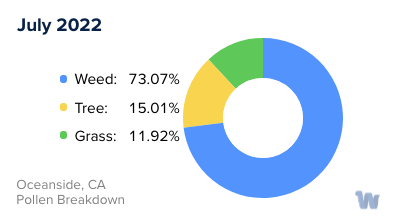
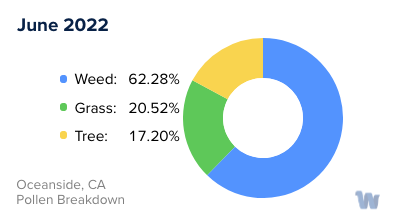
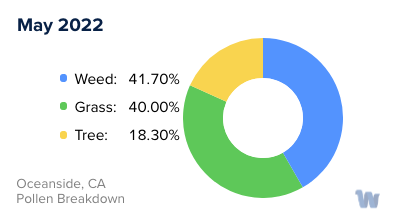
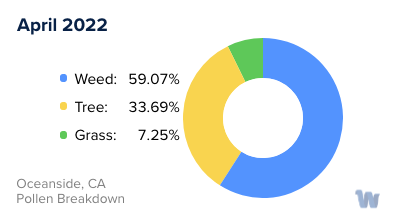
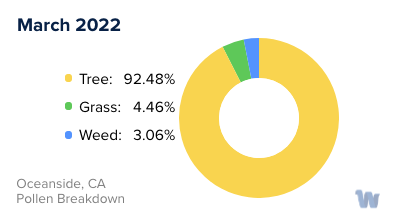
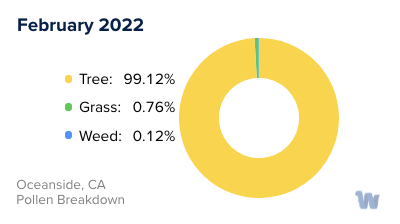
Pollen and Hay Fever in Oceanside, CA
Living in Oceanside, California, you're spoiled with stunning ocean views, beautiful weather, and a vibrant community. But there's another side to this coastal paradise, one that some residents know all too well - pollen allergies. Also known as hay fever, pollen allergies can make certain seasons of the year particularly challenging for those affected.
As an Oceanside resident, you may wonder what types of pollen are causing your sneezing, itchy eyes, and runny nose. Two primary types of pollen are common culprits: tree pollen and grass pollen.
Tree pollen is most prevalent in the spring, especially from February to May. Several species of trees are known to contribute to the pollen count in Oceanside. Among them are oak, cedar, pine, and olive trees. These trees release tiny, airborne pollen grains that can provoke hay fever symptoms in sensitive individuals.
Grass pollen, on the other hand, typically reaches its peak in late spring and early summer, usually from May to July. Common grasses in the Oceanside area that produce allergy-triggering pollen include Bermuda grass, ryegrass, and Kentucky bluegrass. Even though these grasses are more common in inland areas, coastal winds can easily carry their pollen to Oceanside.
While pollen allergies can be a nuisance, understanding what triggers your symptoms and when these allergens are most prevalent can help you better navigate your day-to-day life during pollen season. Remember, there's no need to let pollen allergies keep you from enjoying the natural beauty of Oceanside. With knowledge and a bit of planning, you can still enjoy the outdoors, even during peak pollen seasons.

